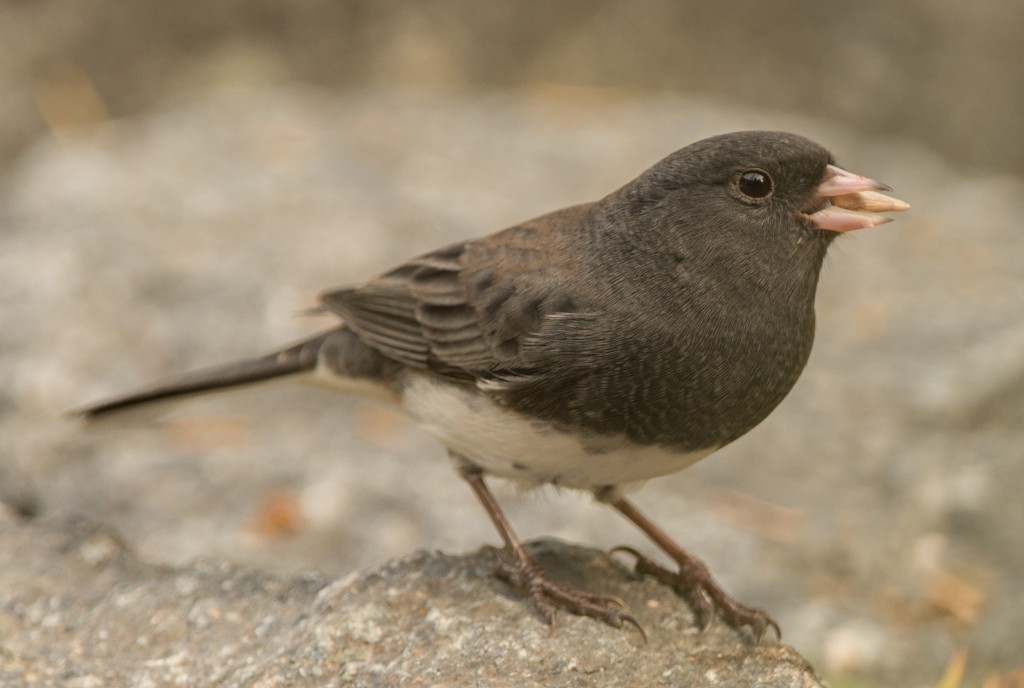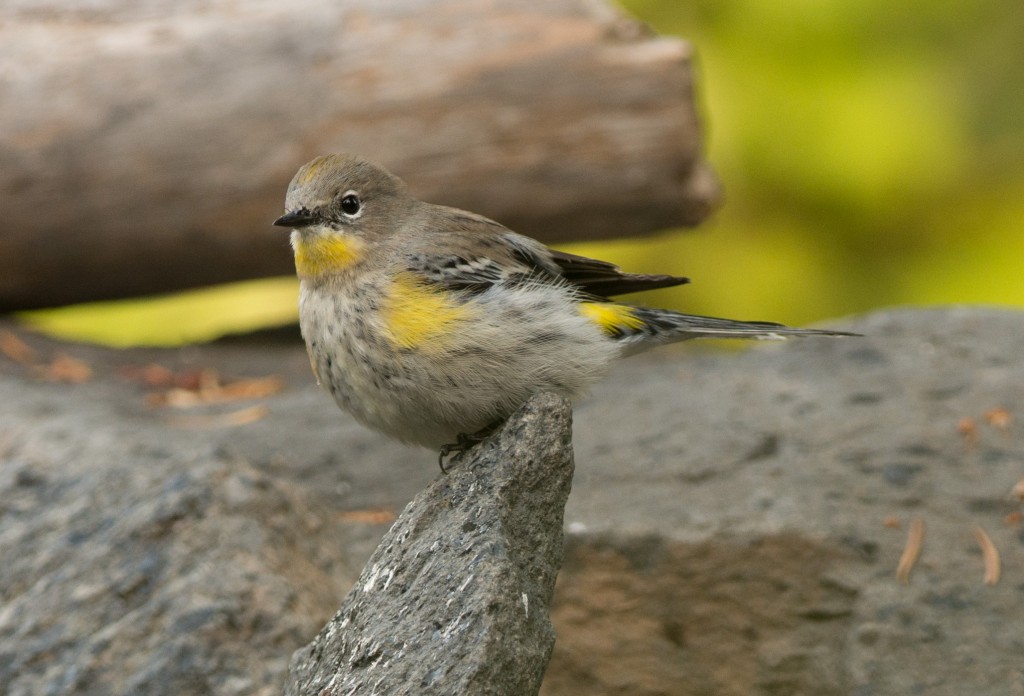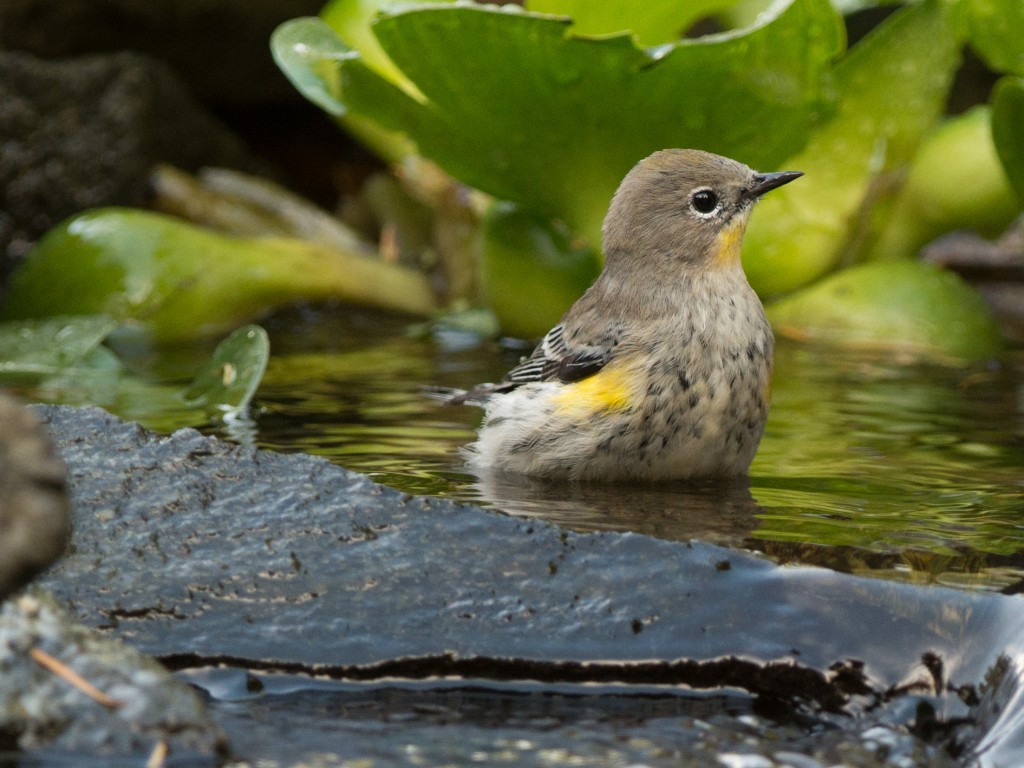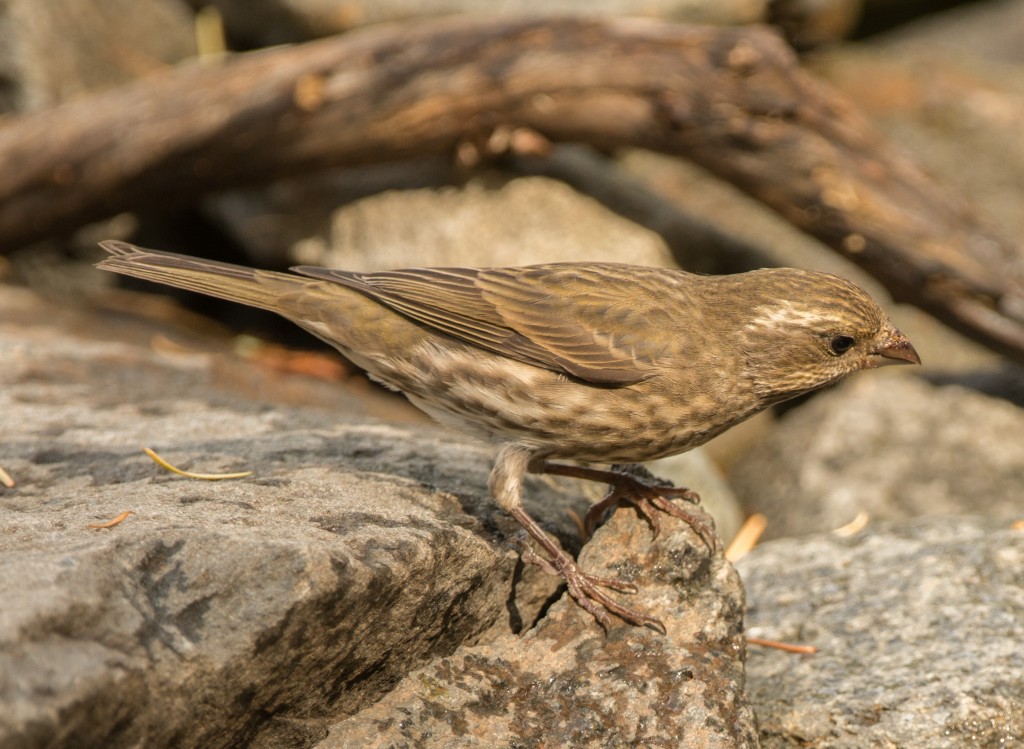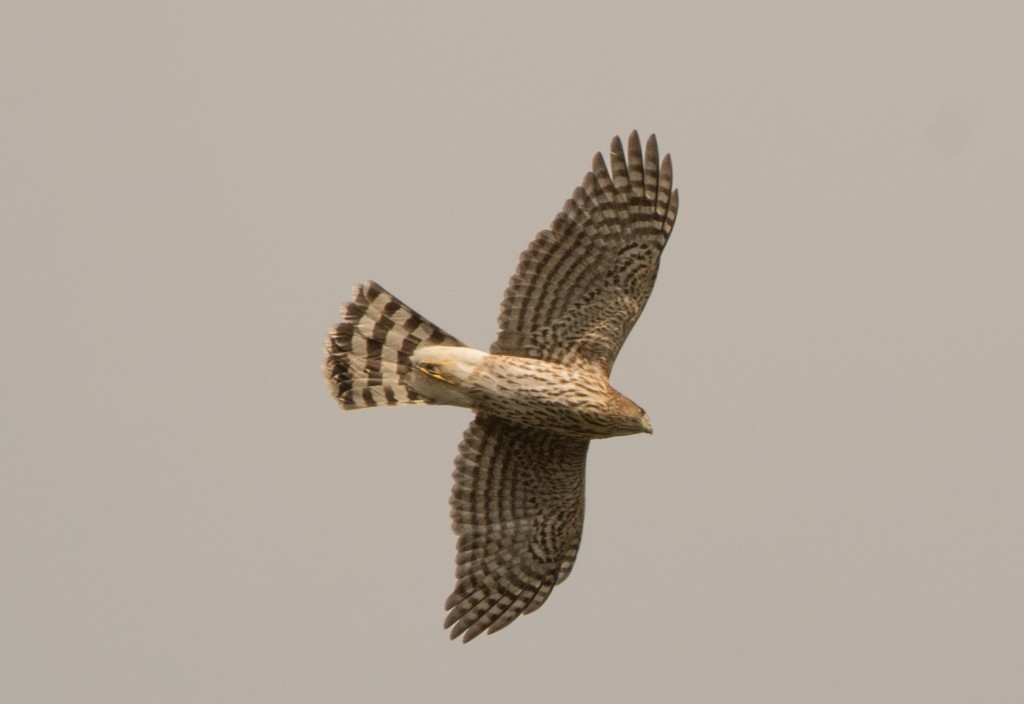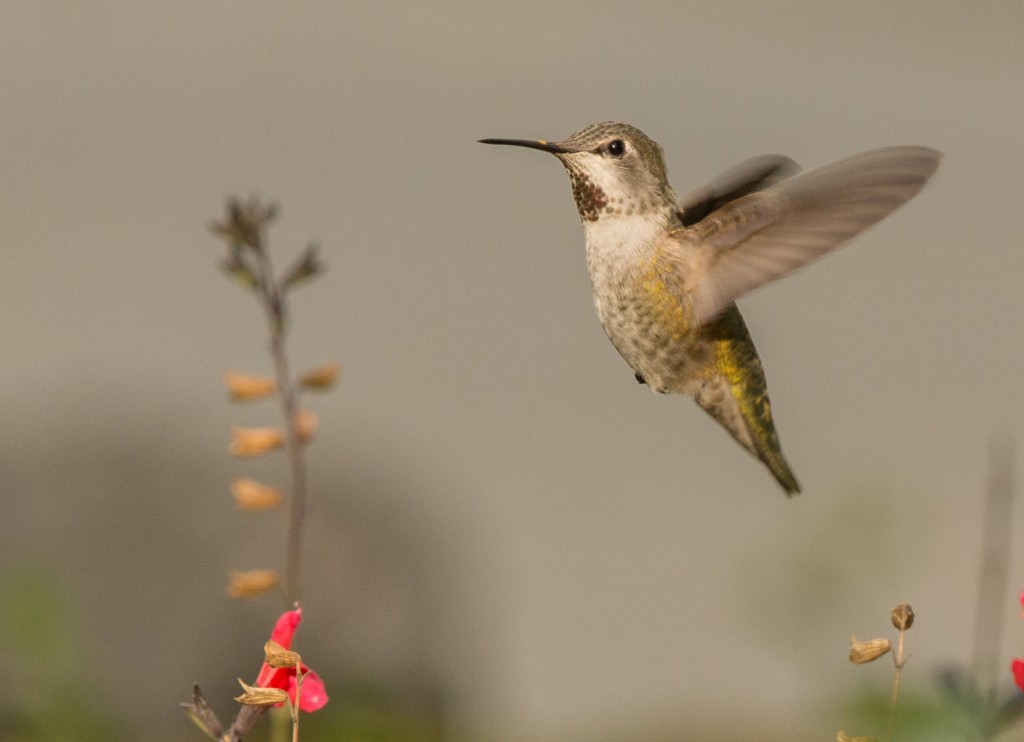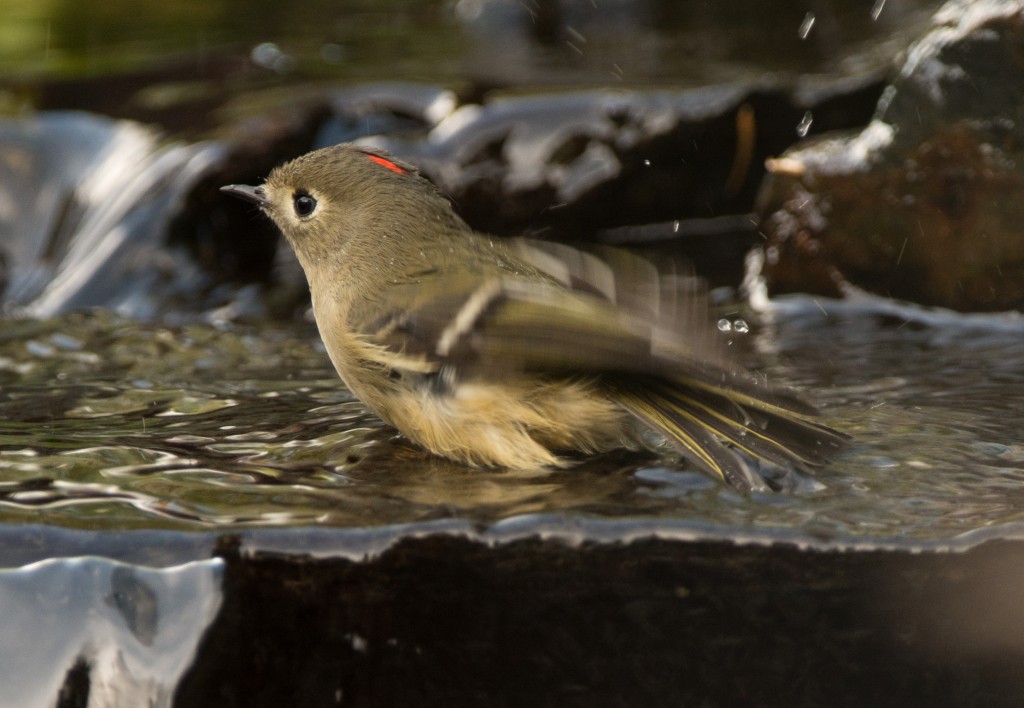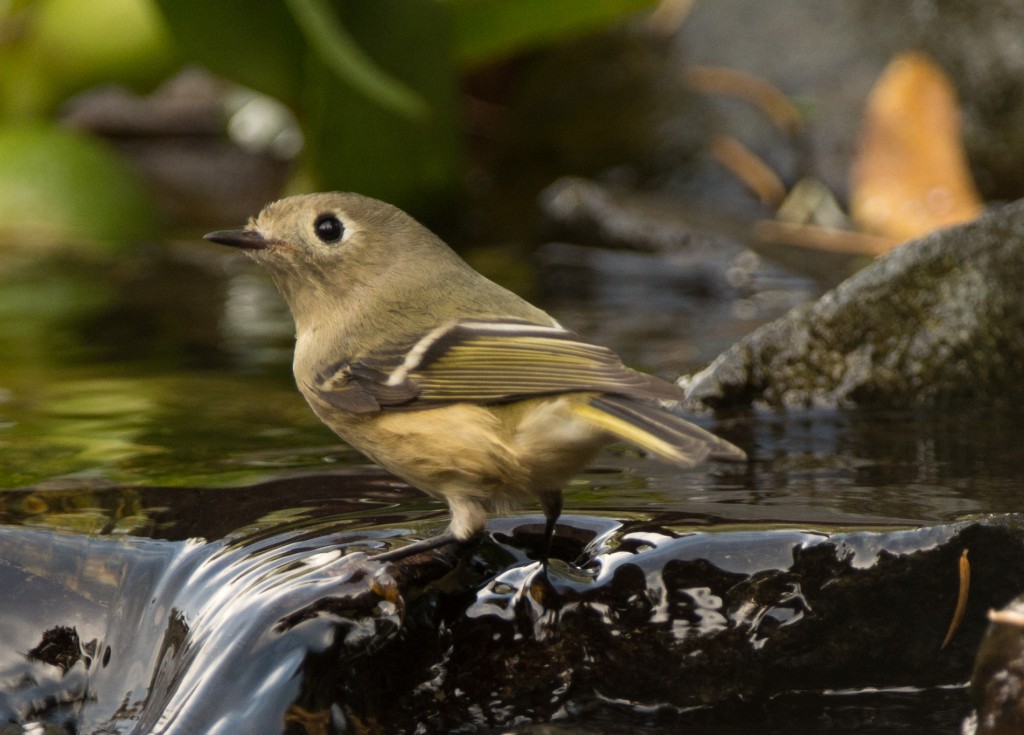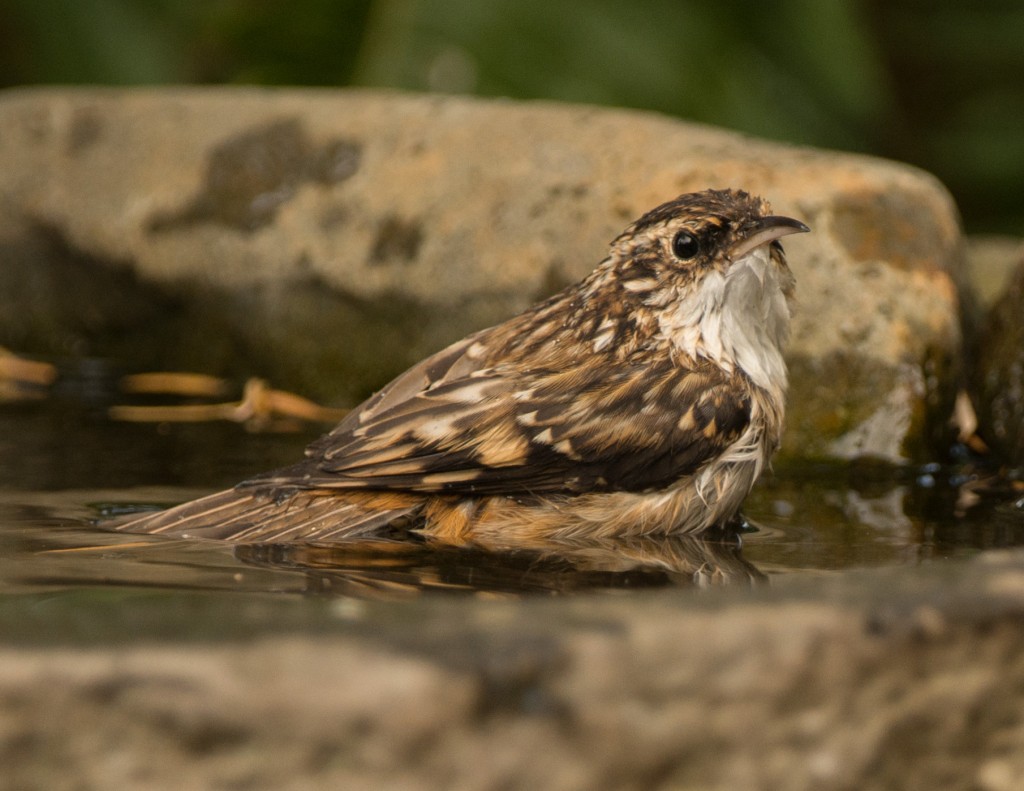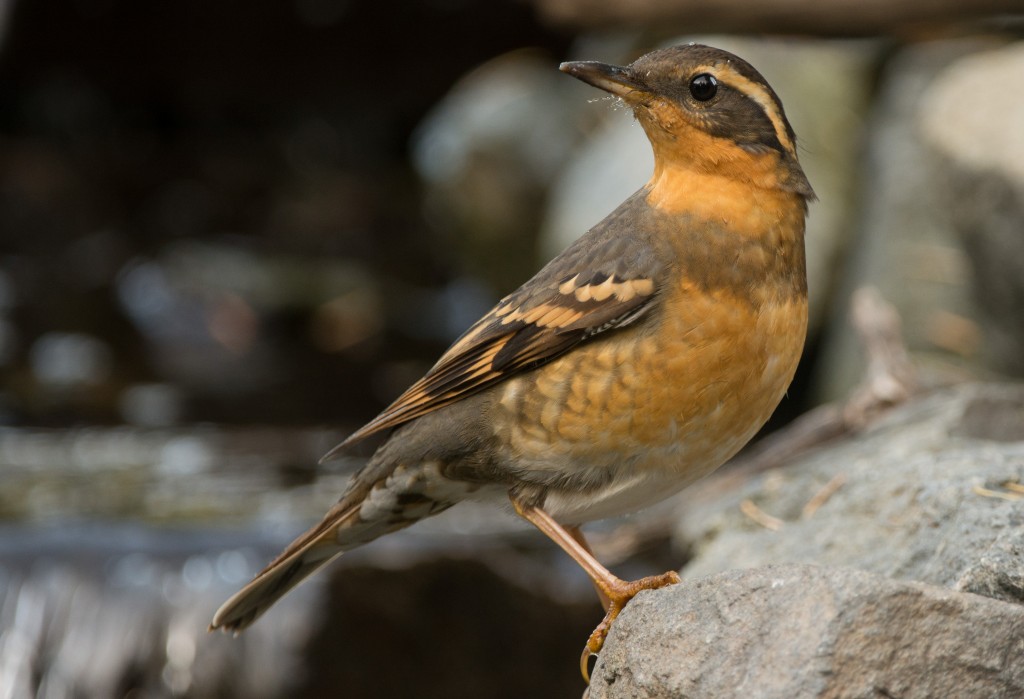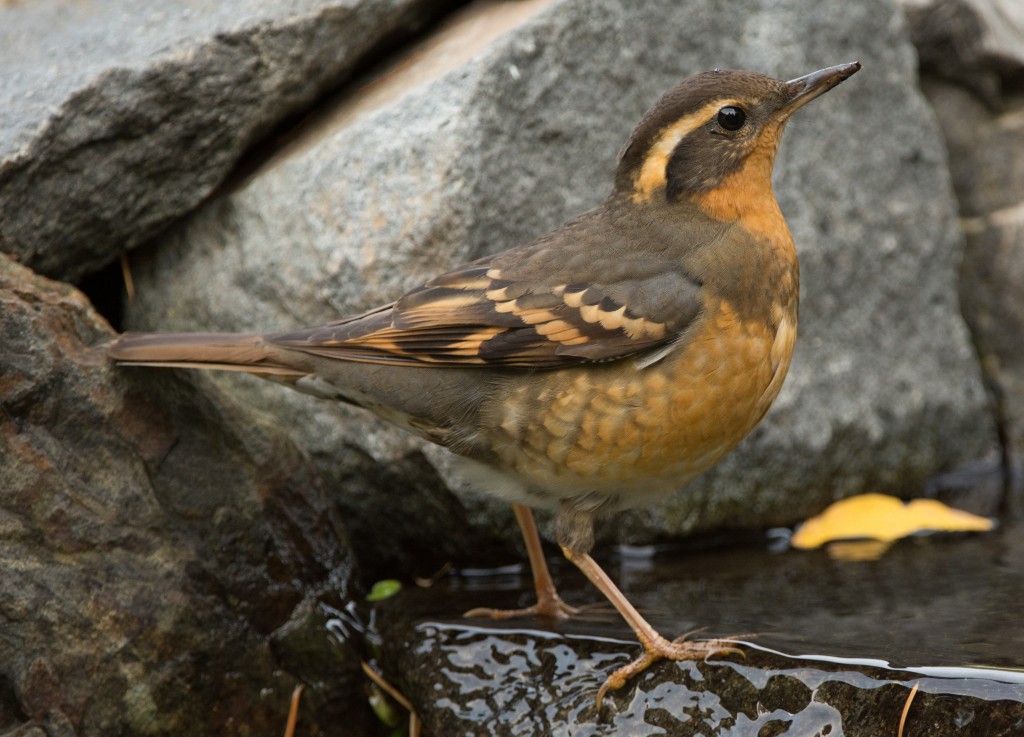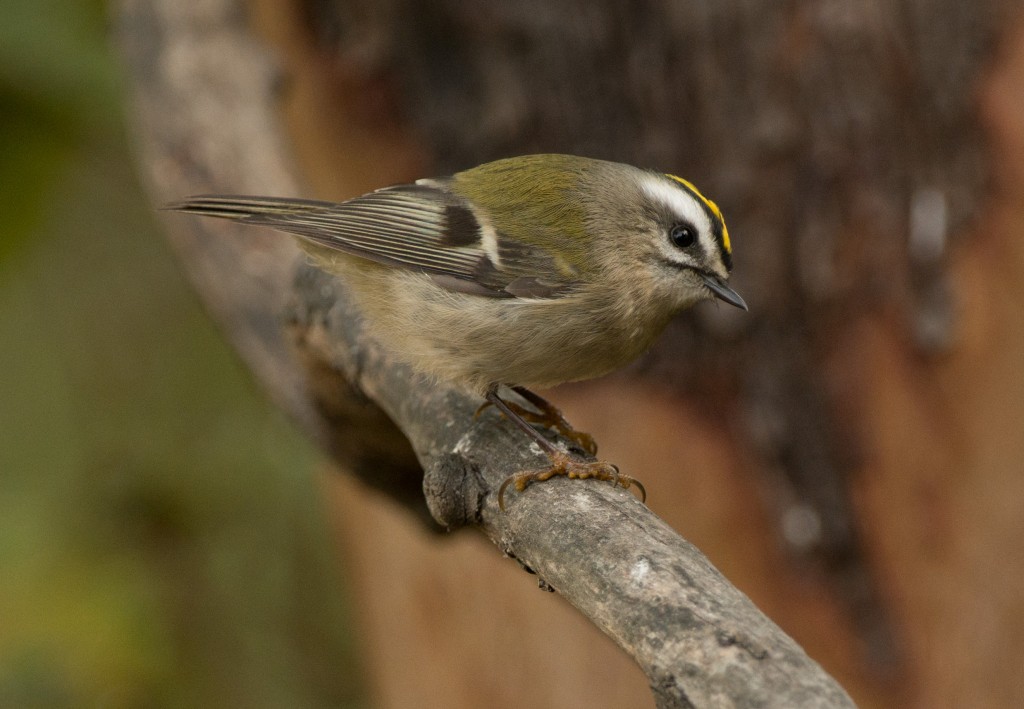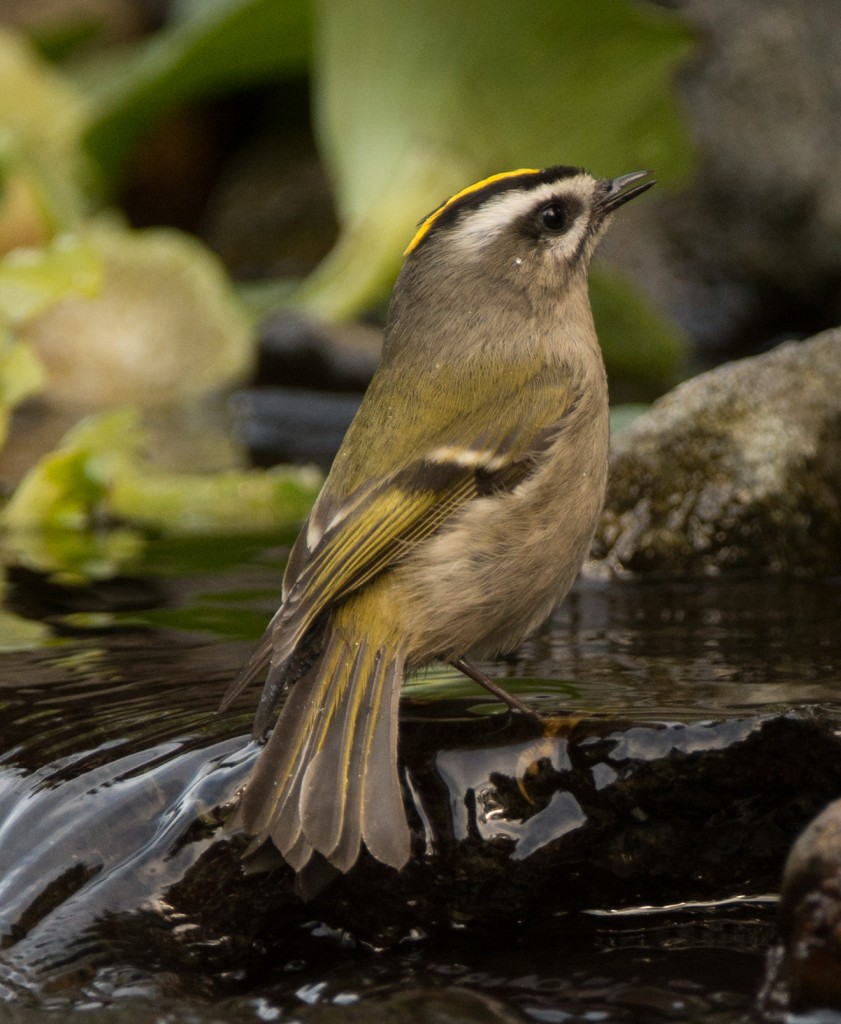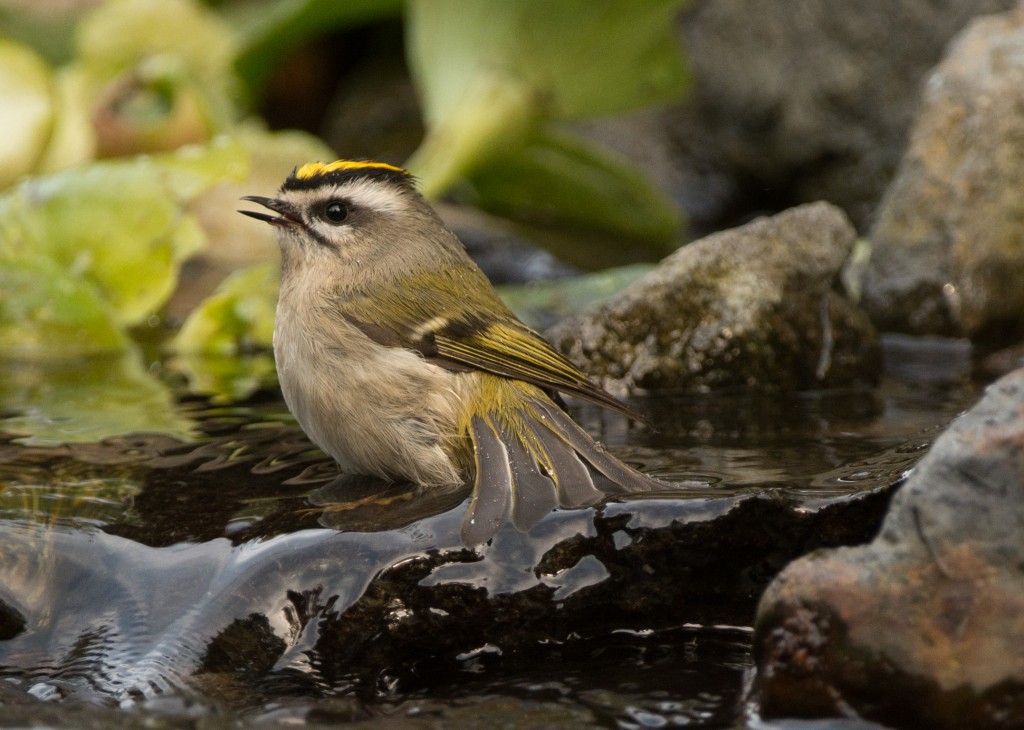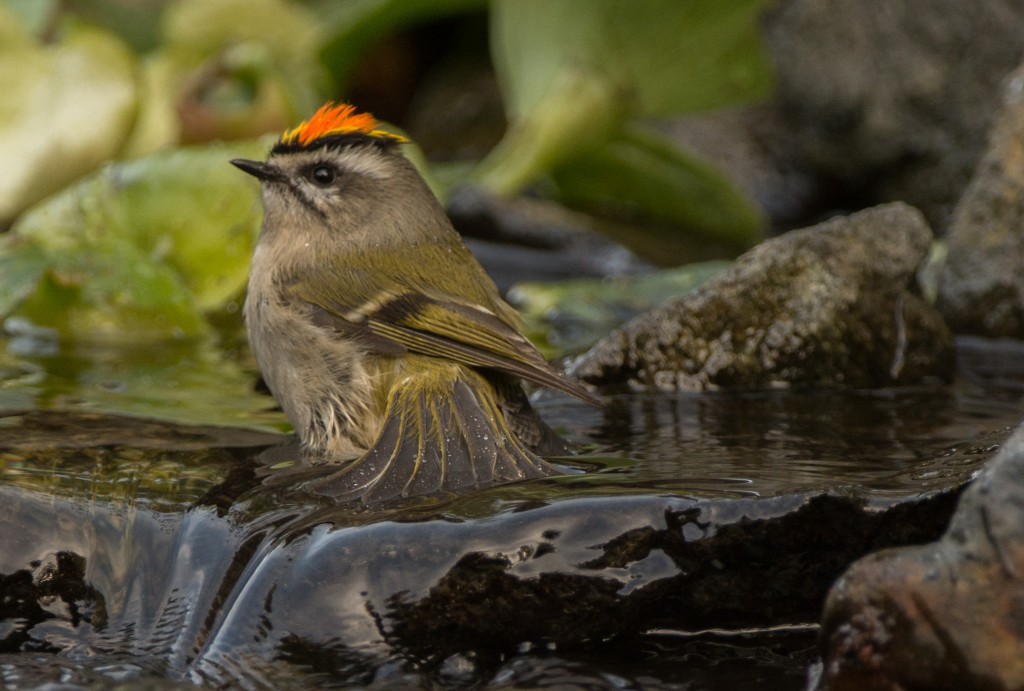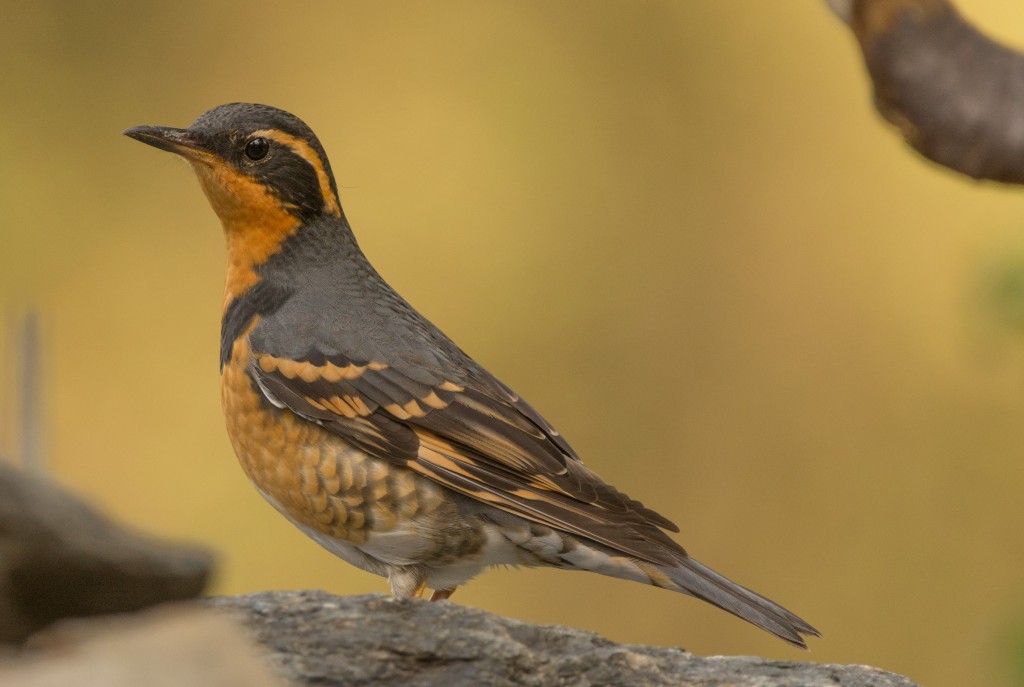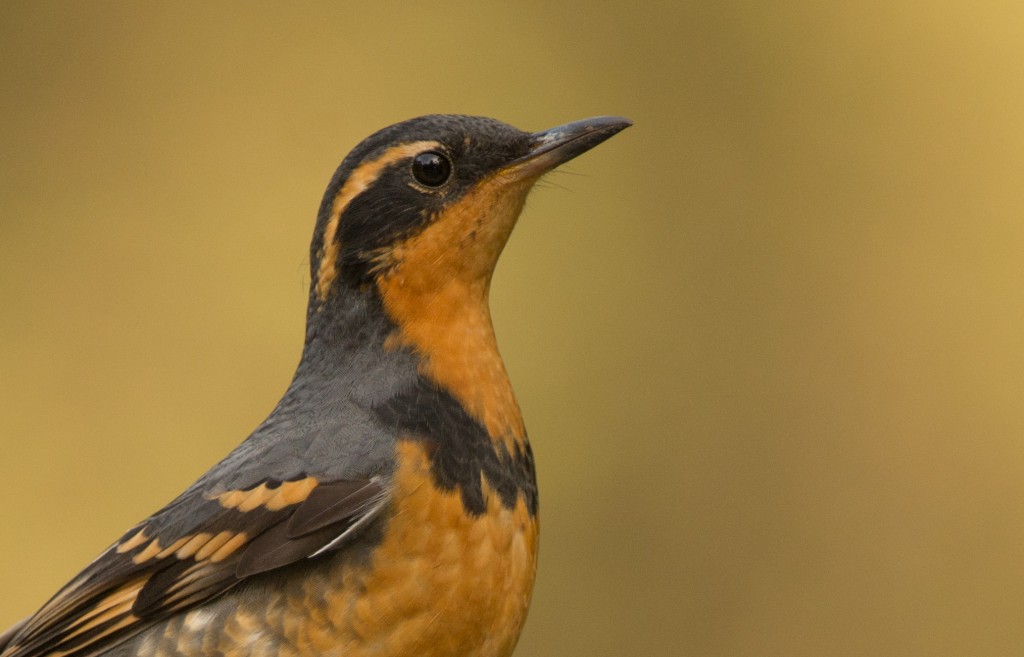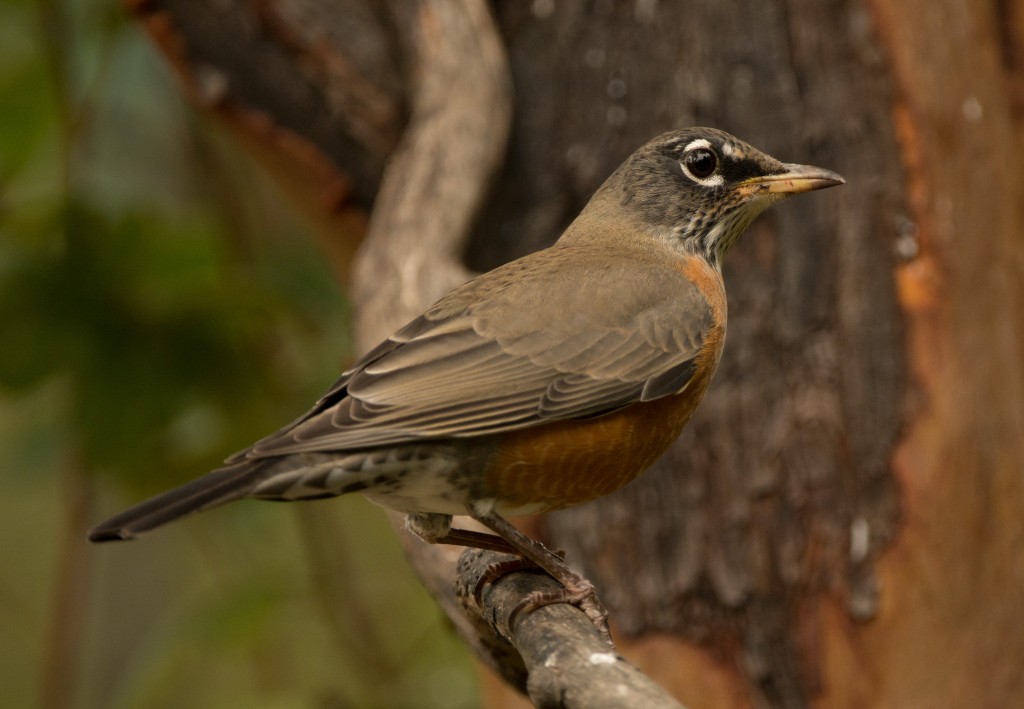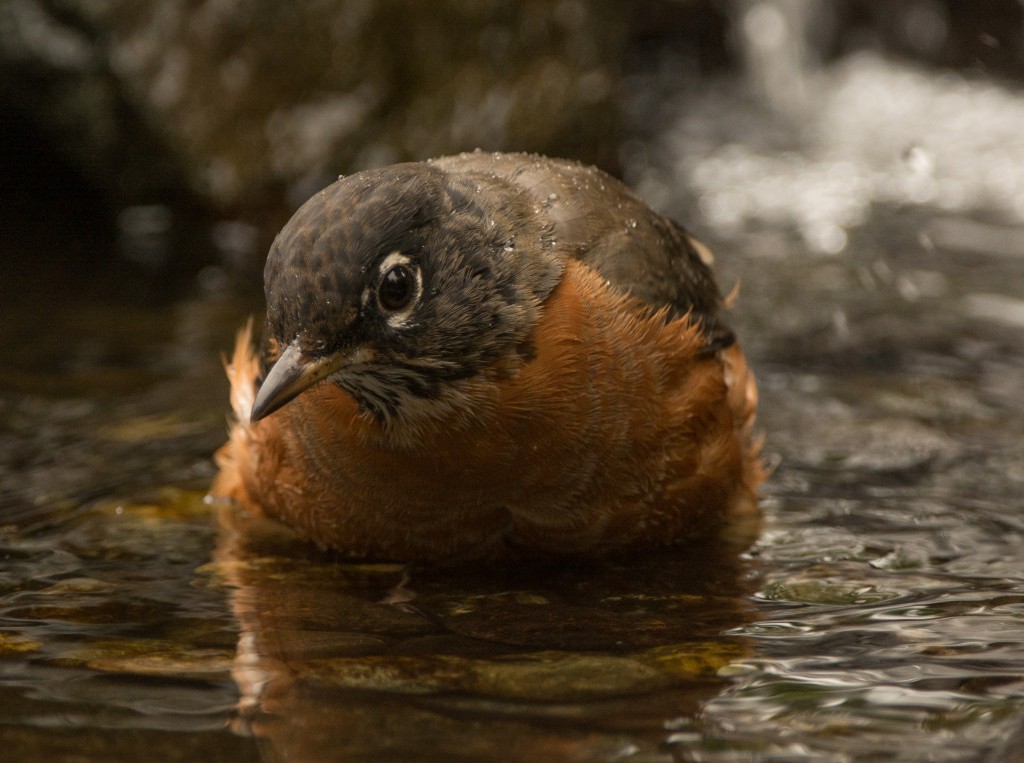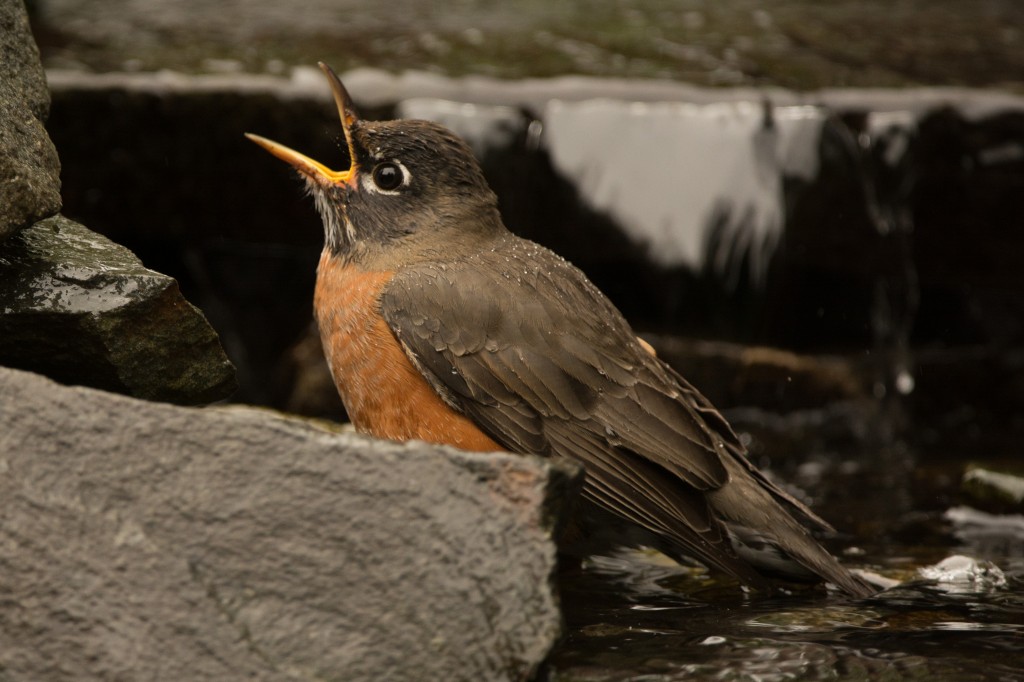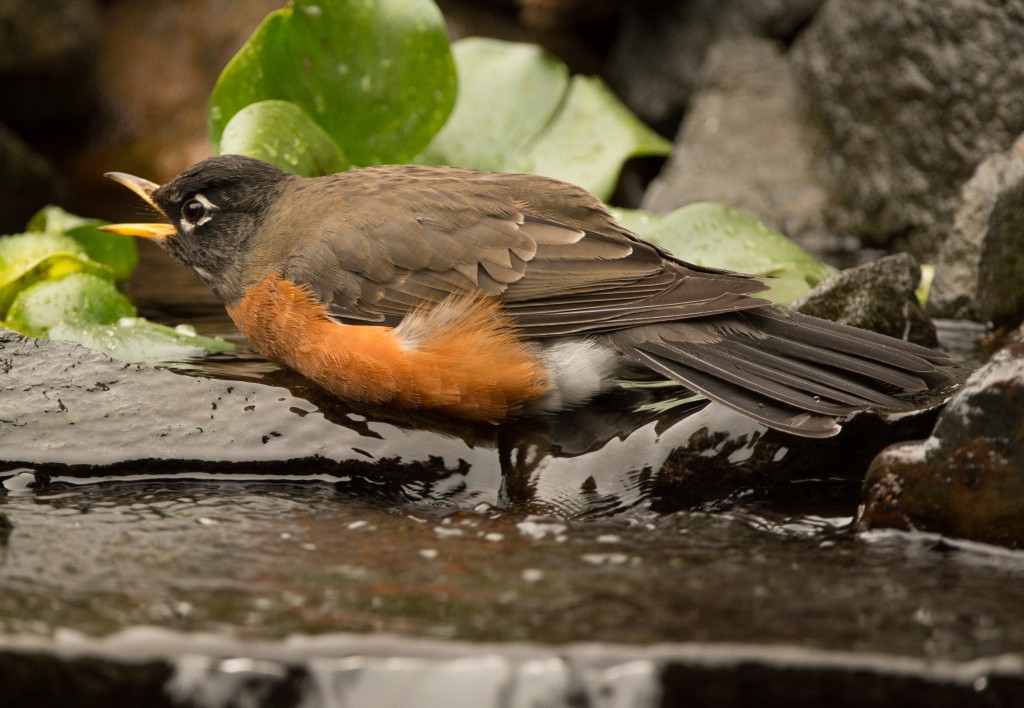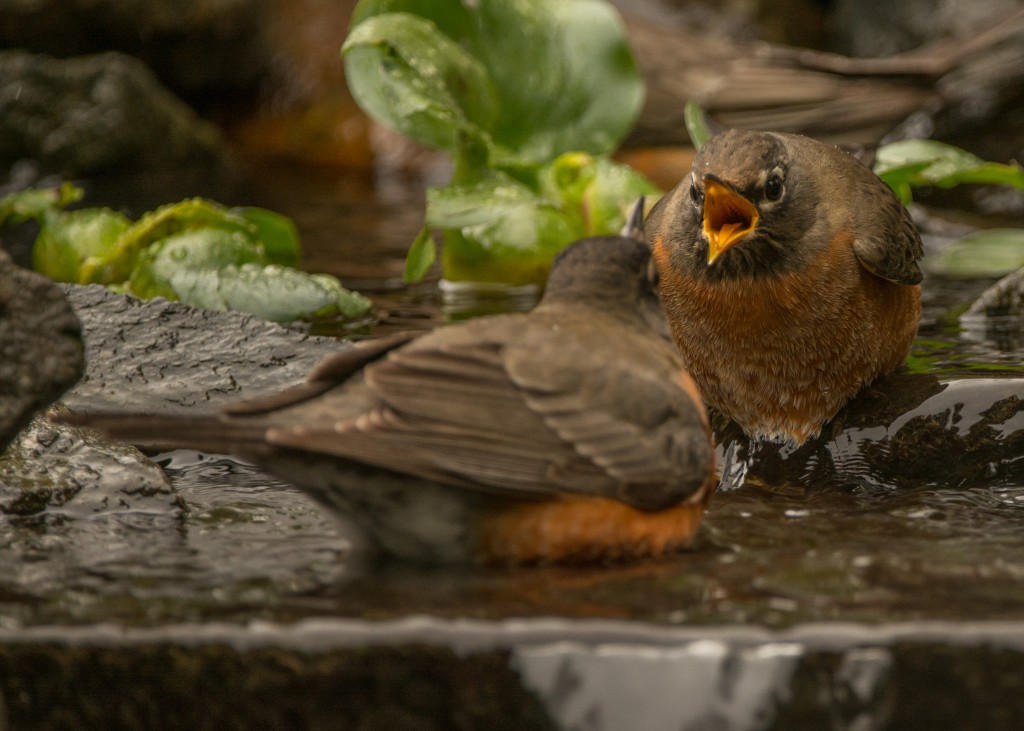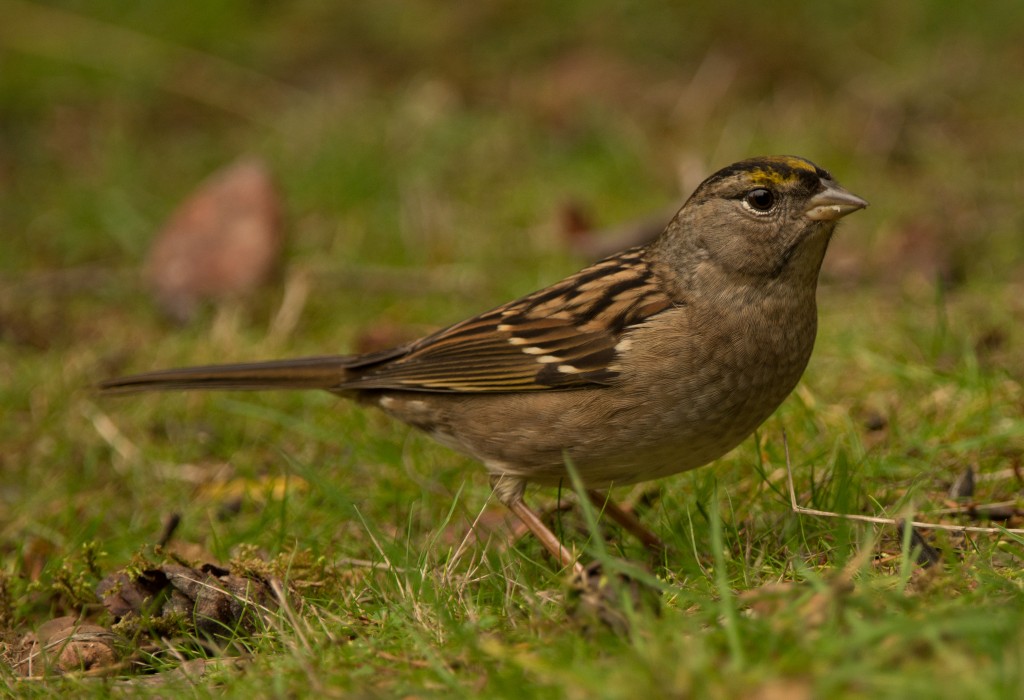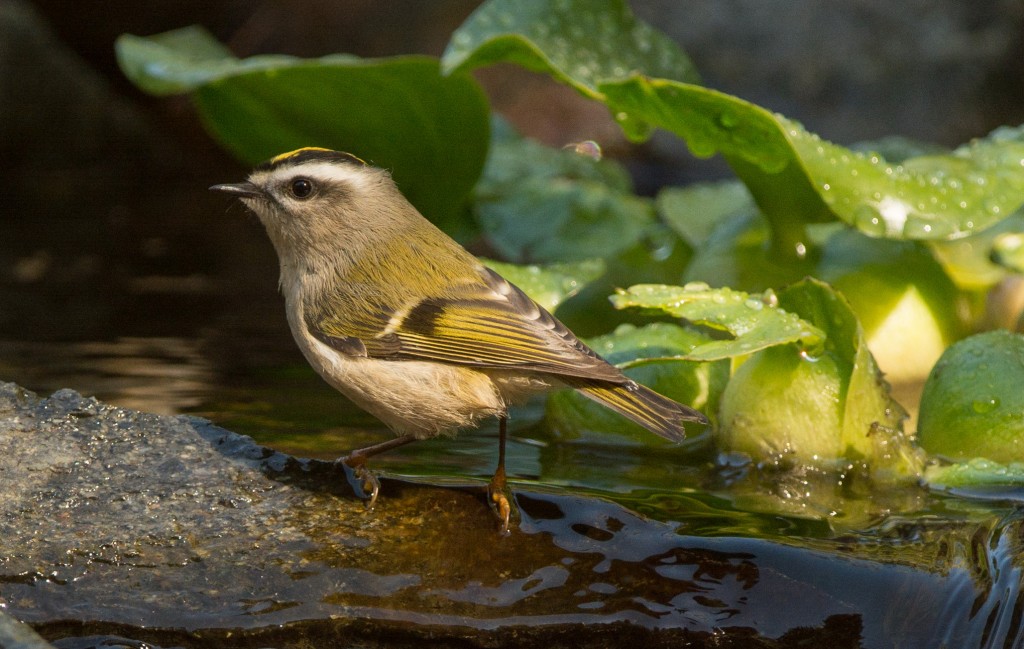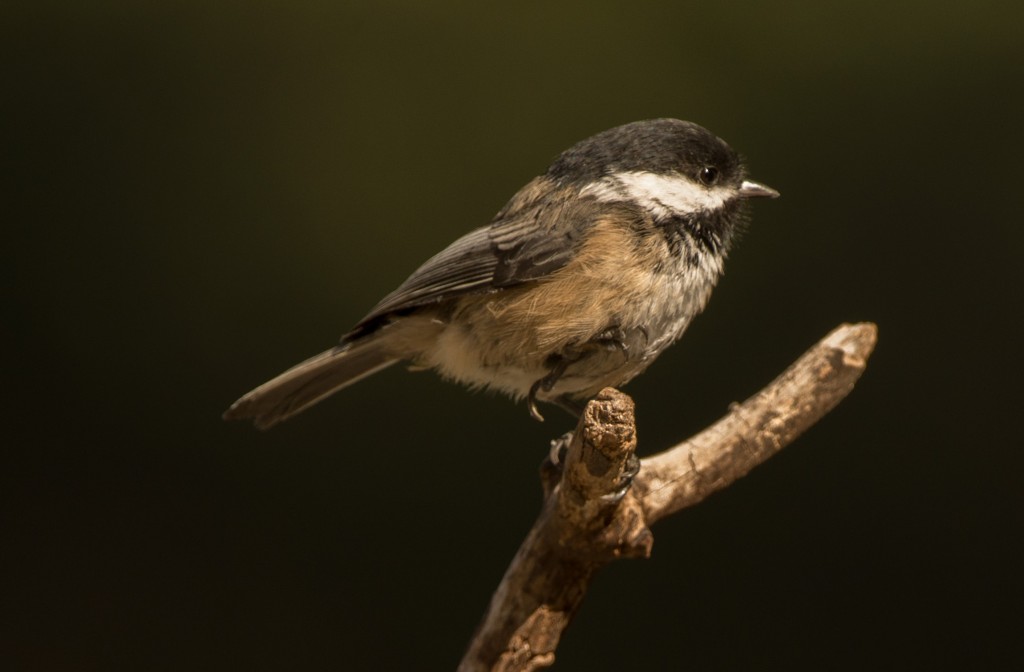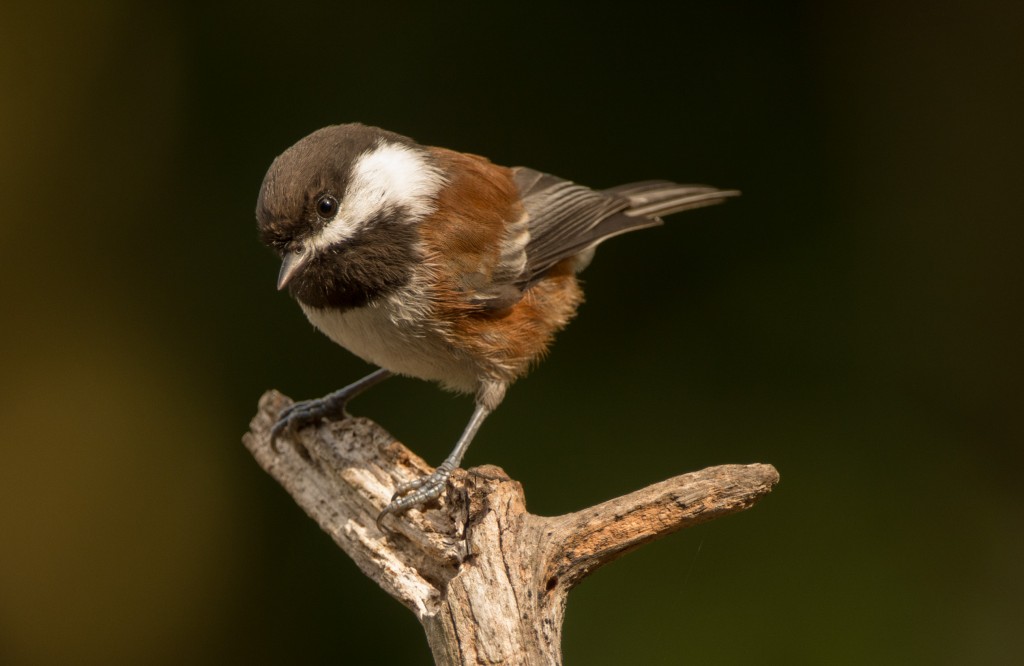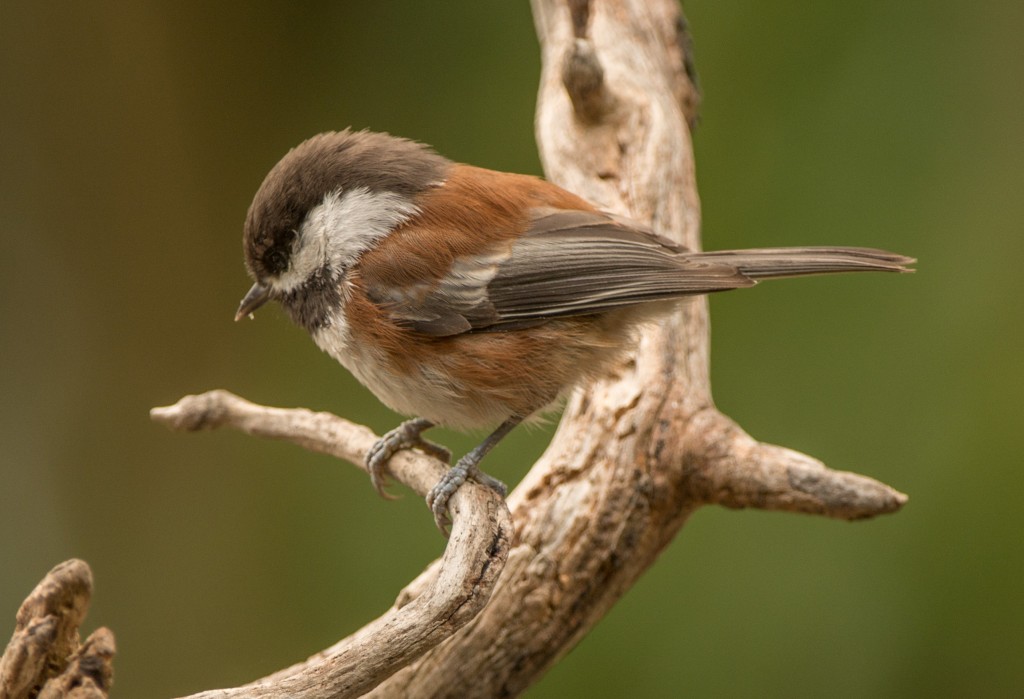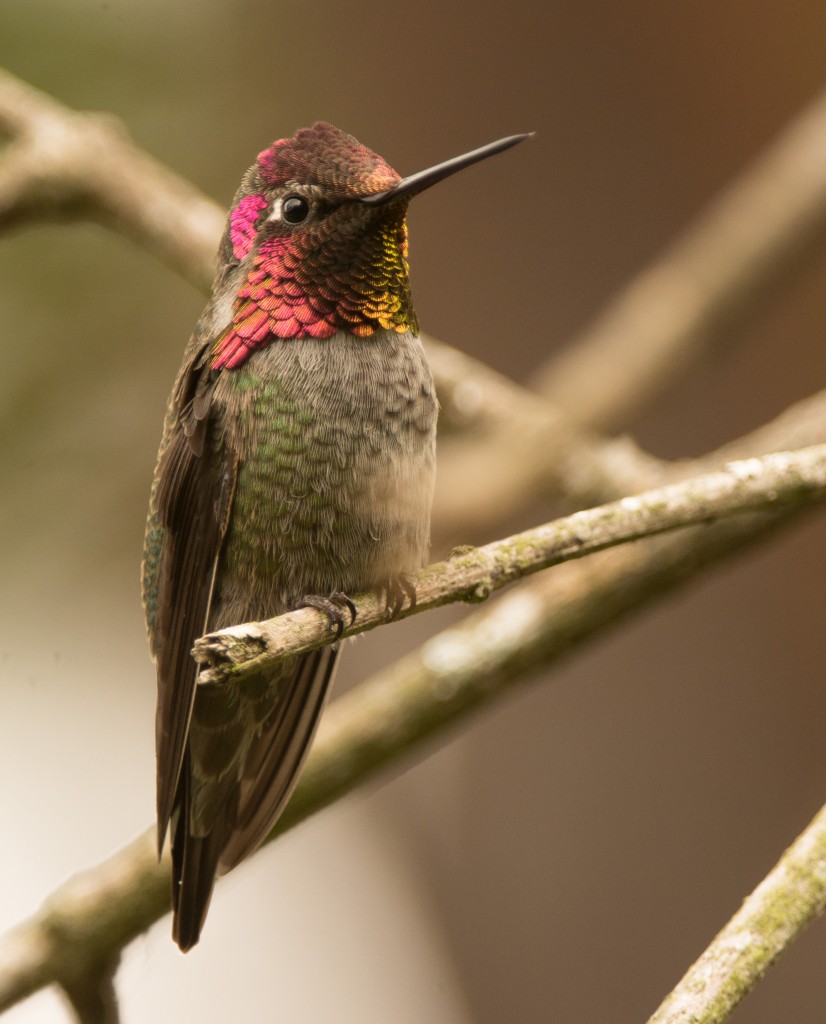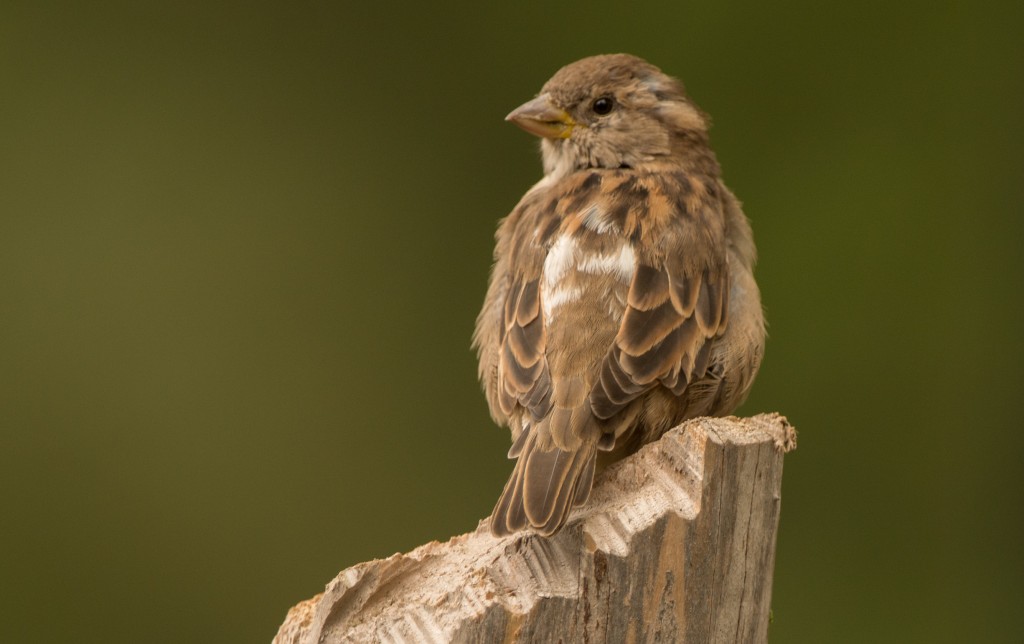Friday, October 9, 2015, was at least our second windy day in a row. I thought that this would discourage birds from visiting the yard, but it didn’t seem to be the case so I decided to spend some time in the yard.
One of my first interesting birds was what is apparently a Slate-colored Dark-eyed junco. I thought I had seen one several days earlier but I hadn’t gotten either a good look at the bird or a photo… this day’s photos confirmed it. This makes at least eight seasons in a row that we have had at least one Slate-colored junco in the yard.
My next interesting observation were two or more Yellow-rumped warblers of the Audubon’s race. They made several visits to over a long period of time. I can confirm from my photos that I had at least two different individuals in the yard, but I suspect several more. At a couple of times during my observations there were two in our watercourse at the same time.
Next up was a female Purple finch, the first I had observed in our yard and only the second one I’ve seen on Cap Sante in the 15 years we’ve lived here at three different locations. There’s so much (color) variation among male House finches that I doubt my ability to distinguish between the male House and Purple finches, but the females have a broad, white wash over their eye. I’ve always thought myself a better identifier of the females of the two species. This bird was approaching the watercourse when a squirrel frightened it away and it left the yard., but fortunately I obtained a couple of photos. After the Purple finch observation I’ve been making a point of more carefully observing the male finches that visit the yard!
Shortly after the Purple finch sighting I noticed a bird soaring behind some of our tallest fir trees. It was circling and there seemed like the chance that it was headed my way so I had time to quickly change a couple of settings on my camera to facilitate photographs of a flying bird. I’m fairly sure the bird is a juvenile accipiter and my guess is that it’s a Cooper’s hawk. I don’t usually see these birds in the air.
Later I managed to photograph a female Anna’s hummingbird feeding on our salvia. We also have at least one male and will maintain a feeder to try to help the birds through the winter.
Next up was a male Ruby-crowned kinglet, our second sighting of the season. It visited an alternate bird bath and I was able to obtain several photos of it.
Beginning to wind down now, a Brown creeper visited the same bird bath. I always have trouble photographing the creeper (I think the autofocus on the camera doesn’t deal effectively with the bird’s camouflage pattern) so a stay in the bird bath usually gives me multiple opportunities to get at least some photos with a good focus.
By this time I was quite pleased with the day’s photo production and was getting ready to pack it up for the day when a female Varied thrush appeared at the watercourse unexpectedly. I took some photos of her and then decided to call it a day!

